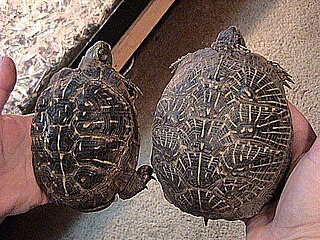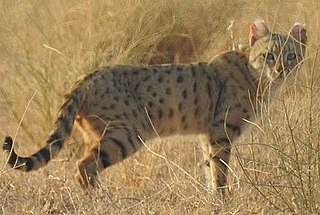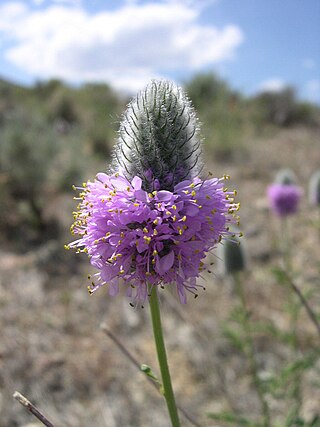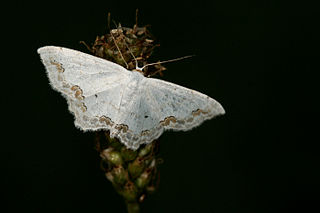
The Sri Lanka blue magpie or Ceylon magpie is a brightly coloured member of the family Corvidae, found exclusively in Sri Lanka. This species is adapted to hunting in the dense canopy, where it is highly active and nimble. Its flight is rather weak, though, and is rarely used to cover great distances. In spite of the Sri Lanka blue magpie's ability to adapt to the presence of humans, it is classified as vulnerable to extinction due to the fragmentation and destruction of its habitat of dense primary forest in the wet zone of southern Sri Lanka.

The Barbary sheep, also known as aoudad is a species of caprine native to rocky mountains in North Africa. While this is the only species in genus Ammotragus, six subspecies have been described. Although it is rare in its native North Africa, it has been introduced to North America, southern Europe, and elsewhere. It is also known in the Berber language as waddan or arwi, and in former French territories as the moufflon.

Terrapene ornata is a species of North American box turtle sometimes referred to as the western box turtle or the ornate box turtle. It is one of two recognized species of box turtle in the United States, having two subspecies. The second recognized species of box turtle is the eastern box turtle,Terrapene carolina. T. carolina has six subspecies, two of which are endemic to Mexico.

The Asiatic wildcat, also known as the Asian steppe wildcat and the Indian desert cat, is an African wildcat subspecies that occurs from the eastern Caspian Sea north to Kazakhstan, into western India, western China and southern Mongolia. There is no information on current status or population numbers across the Asiatic wildcat's range as a whole, but populations are thought to be declining.

The European White Elm cultivar Ulmus laevis 'Ornata' was erroneously identified by Carrière as U. communis ornata in 1858. 'Ornata' was named by Carrière for the numerous and intensely green leaves which gave the trees 'a magnificent appearance'.

Plusiinae is a smallish subfamily of the moth family Noctuidae. As the Noctuidae appear to be a paraphyletic assemblage, the Plusiinae may eventually be raised to family status.

Rupicapra is a genus of goat-antelope called the chamois. They belong to the bovine family of hoofed mammals, the Bovidae.

The ornate box turtle is one of only two terrestrial species of turtles native to the Great Plains of the United States. It is one of the two different subspecies of Terrapene ornata. It is the state reptile of Kansas and Nebraska. It is currently listed as threatened in Illinois and is of concern and protected in six Midwestern states.

Scolitantides orion, the chequered blue, is a species of butterfly in the family Lycaenidae. It is found in Europe, Russia and east across the Palearctic to Japan.

Dalea ornata, the Blue Mountain prairie clover, is a perennial subshrub or herb of the subfamily Faboideae in the pea family (Fabaceae).

Panchrysia is a genus of moths of the family Noctuidae.

Panchrysia v-argenteum is a moth of the family Noctuidae. It is found in the Carpathian mountains, Dalmatia, the Alps and Greece. The species is found high altitudes of up to 1,400 meters.

Scopula ornata, the lace border, is a moth of the family Geometridae. The species was first described by Giovanni Antonio Scopoli in his 1763 Entomologia Carniolica. It is found in Europe, North Africa and the Near East.

Hesperilla ornata, the spotted skipper or spotted sedge-skipper, is a butterfly of the family Hesperiidae. It is found along the non-tropical eastern seaboard of mainland Australia and in the adjacent mountain ranges.

The ornate slider is turtle belonging to the genus Trachemys of the family Emydidae. It is found in Guerrero, Jalisco, Nayarit and Sinaloa in western Mexico.
Denazinemys was a genus of baenid turtle that lived in the Late Cretaceous of New Mexico. The holotype specimen, which D. nodosa was based on, USNM 8345, consists of a partial carapace and plastron. It came from the De-na-zin Member of the Kirtland Formation, and therefore, Denazinemys lived in the Kirtlandian land-vertebrate age. Many specimens other than the holotype have been assigned to Denazinemys.
Arctia ornata is a moth in the family Erebidae. It was described by Otto Staudinger in 1896. It is found in the Russian Far East and Mongolia.

Panchrysia aurea is a moth of the family Noctuidae. It is found in southern Europe and western and central Asia. The range extends from Portugal, east to Tian Shan, the Altai and the north-western Himalayas. In central Europe, it is found in the southern Alps, lower Austria and the mountains on the Balkan Peninsula.

Panchrysia dives is a moth of the family Noctuidae. It is found from the Ural, east through southern Siberia to the Pacific Ocean. The range includes Kamchatka, Sakhalin and the Kuriles.

The Southeast Asian softshell turtle is a species of softshell turtle in the family Trionychidae.

















